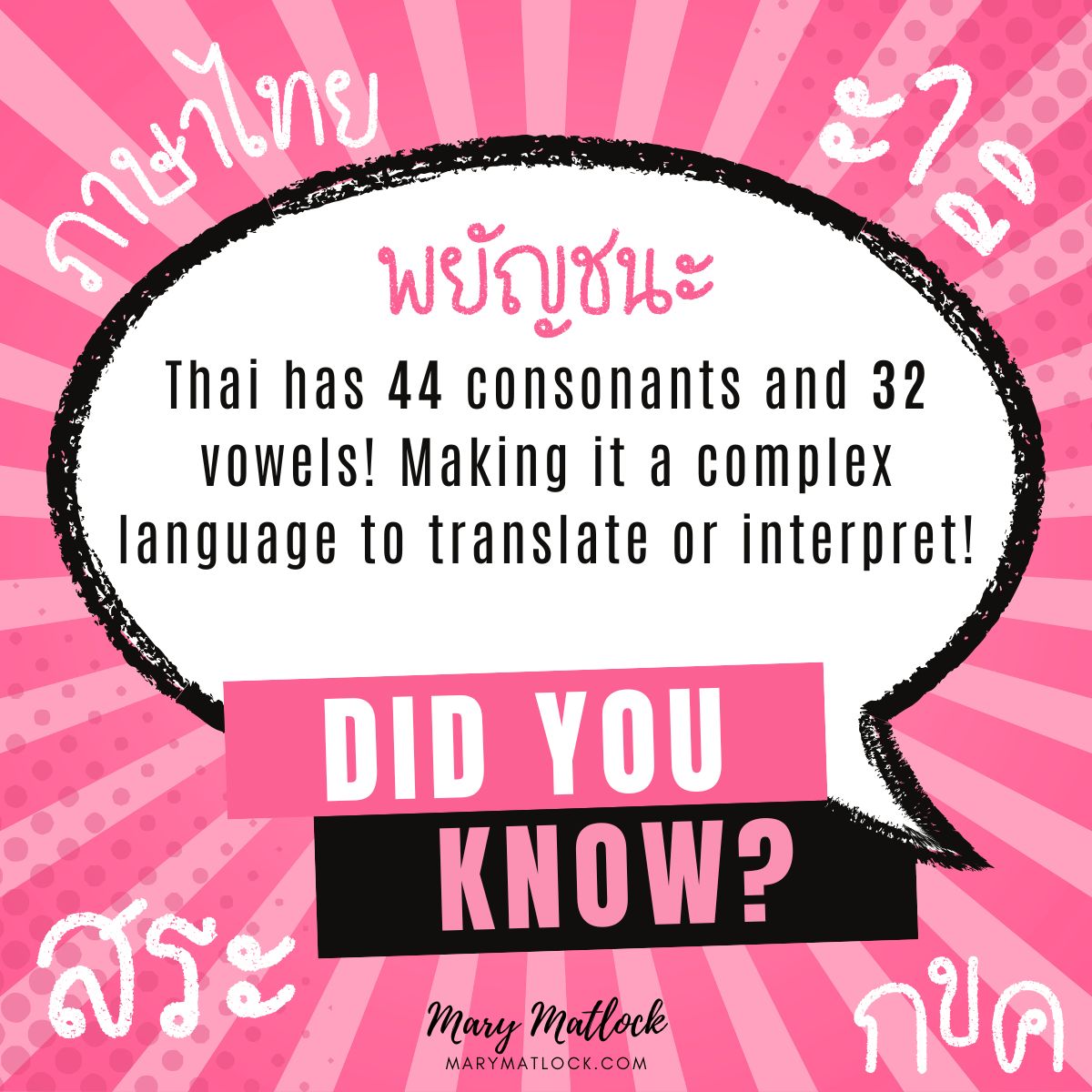Did you know?
Ever wondered why Thai interpreting can feel like solving a linguistic puzzle? With 44 consonants and 32 vowels, it’s no walk in the park! Quite the alphabet party and everyone is invited to join!
Here’s the first piece of the puzzle: Thai is a tonal language, meaning one word can have five different meanings depending on how you say it. Imagine calling for your dog (maa หมา) but summoning a horse (maa ม้า) instead. Whoops!
And just when you think you’ve mastered it, Thai throws in three consonant classes—low, mid, and high. Instead of status symbols, think of them as roles in a well-rehearsed orchestra of tones where each letter is playing its part to keep the melody of pronunciation in harmony.
Thai: Linguistic Puzzle
Thai isn’t just unique in sound, rather, it has a rich history and structure that make it both beautiful and complex. It belongs to the Tai-Kadai language family, sharing linguistic roots with Lao, Shan (spoken in Myanmar), and minority languages in China and Vietnam.
Thai script itself has a fascinating origin, dating back to the 13th century when King Ramkhamhaeng developed a writing system inspired by Old Khmer. Over the centuries, Thai has also absorbed words from Pali, Sanskrit, and Chinese, creating a language that is both dynamic and deeply rooted in tradition.
Want to learn more about Thai’s history? Check out this Britannica article on the Thai language!
The Art of Interpreting Thai
For interpreters, Thai isn’t just about words, it’s about decoding sounds, mastering tones, and ensuring no one accidentally orders a side of fishy meal, news, white (kao ข่าว) instead of a side of rice (kao ข้าว). It’s a challenge, but that’s what makes it an intricate art!
So next time you hear a Thai interpreter working their magic, just know they’re juggling sounds, tones, and a whole lot of brainpower—all in real-time. No pressure, right? 😉
#ThaiInterpreting #LostInTranslation #InterpreterLife #LinguisticPuzzle #WordPlay


